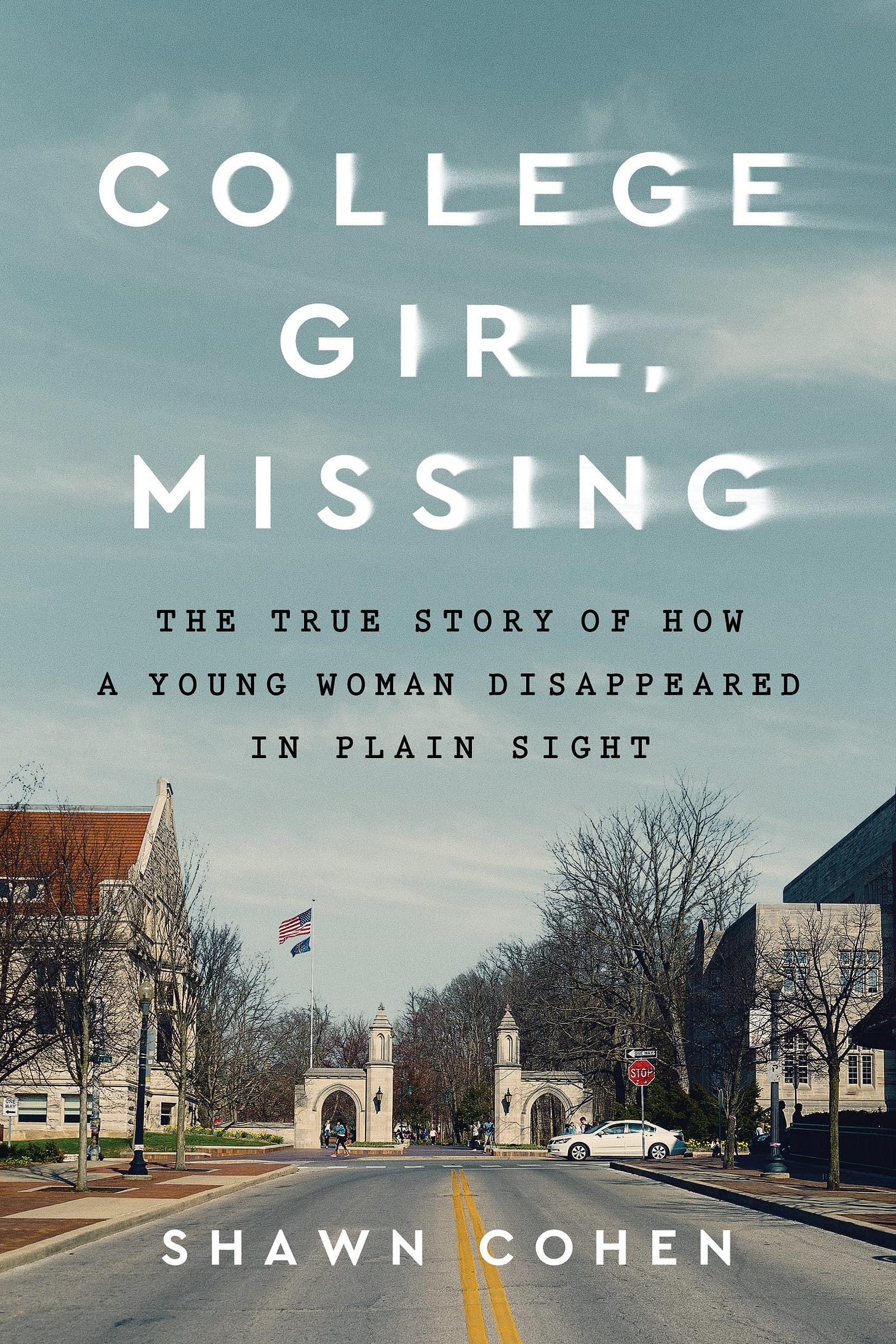Shawn Cohen Cuts Through the True Crime BS in his Book on the Disappearance of Lauren Spierer
"College Girl, Gone Missing" uses a reporter's skills and Occam's Razor to cut through the smokescreen and prioritize what most likely happened to the missing college student
By Jayson Blair
COLLEGE GIRL, GONE MISSING, by Shawn Cohen
Occam’s Razor is a problem-solving principle suggesting that the simplest explanation is often the most likely correct. Scientists use it to develop theoretical models. Doctors use it to diagnose patients. Designers use it to reduce complexity. True crime creators often have a hard time finding it in their medicine cabinets.
Enter Shawn Cohen, an investigative journalist and author of the new book College Girl Gone, Missing, about the 2011 disappearance of 20-year-old Indiana University Bloomington college student Lauren Spierer in Bloomington, Indiana. Cohen has covered crime and law enforcement for The Daily Mail and has reported from New York, Washington, DC and Jerusalem. Before that, he was the Police Bureau Chief of The New York Post and a writer for The Journal News in Westchester County, NY, where Spierer grew up.
The narrative is strong and the writing is serviceable, but Cohen’s bona fides as a reporter, covering Spierer’s community and working in the Police Bureau in what we fondly called “The Shack” in the New York Police Department when I worked there for The New York Times, led to unprecedented access and a nuanced, factual and logical exploration of the disappearance of Spierer that is often lacking in true crime tomes.
Wild theories have sprouted up like corn stalks on the Great Lakes Plains of Indiana in Spierer’s case. Was she killed serial killer Israel Keyes? The FBI says “no,” but the theory persists because of hugely popular true crime creators have misinterpreted the FBI’s actions when they asked local police not to name Keyes as a suspect. Instead of making the logical inference that the FBI was telling the police in Indiana to not mention Keyes because they knew he was not involved, some assumed the FBI was attempting to protect the investigation. Who needs to protect an investigation against a man who is dead? Get a grip.
For those who are not paid subscribers, this article is a part of our archives and our next free article will drop Monday morning. For those who are, please read on.
Keep reading with a 7-day free trial
Subscribe to True Crime Times Substack to keep reading this post and get 7 days of free access to the full post archives.





